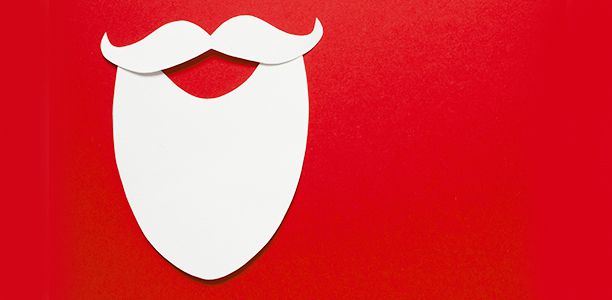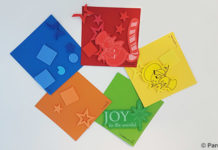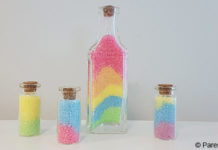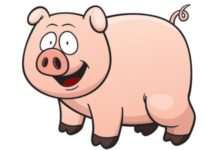Age
Duration of activity
10-30 minutes
Materials/equipment
- Santa beard template or you can let your child draw their own beard.
- Cardboard or a scrap of fabric
- Craft glue
- Paintbrush
- Cotton wool
- Elastic (this is so it can be attached to the face at points marked x)
Cost
If you don’t already have the materials in your house you’ll be able to find glue, cotton wool and string for just a few dollars and should have plenty left over for future craft projects.
Preparation
- Cut out the template for younger children. Older children who are already able to follow curved lines when they are cutting (usually from about 4 years) can cut the template themselves.
- Trace the template onto cardboard or fabric. Fabric will last longer and will fit their faces better.
- Put a small quantity of glue in a container, about enough for making the beard. Your young child will probably do their best to use it all, no matter how much you put in.
- Loop the elastic through the beard (where the x marks are) so your child can tie it on to wear when they’re finished.
What to do
- Show your child the Santa beard template and tell them that you are going to turn it into a fluffy white beard, just like Santa’s beard. Ask your child where beards grow and put the beard on your face (or theirs). For a bit of fun put it on upside down and let your child correct you.
- Ask your child what is wrong with the beard and what you need to do to make it like Santa’s beard.
- Have a talk about Santa and Christmas and the meaning of these events. You could talk about the different ways people in other countries celebrate Christmas or how in some countries people celebrate other special days instead of Christmas.
- Tell your child that you will stick fluffy white cotton wool onto the cardboard/fabric to make a beard just like Santa’s.
- Put the glue in a place your child can easily reach it and instruct them to take a single cotton ball, put on glue with the paintbrush and then stick it on the beard template.
- Continue sticking on one cotton ball at a time until the entire beard is covered. As your child sticks the balls, ask them questions about what they are doing, for example, “Where are you going to stick the next one?”
- Wait for the glue to dry and the beard is ready to wear.
Tips
 This is a fantastic activity for young children who are still developing their fine motor skills and might not have enough control to do more advanced crafts that require cutting, painting or colouring.
This is a fantastic activity for young children who are still developing their fine motor skills and might not have enough control to do more advanced crafts that require cutting, painting or colouring.- Encourage older children to count the cotton balls as they stick them on so they get a chance to develop their counting skills.
- Use child safe glue.
Safety
Educational outcomes
Fine motor skills
Picking up and putting down objects is a great way for toddlers to develop the strength and coordination in their fingers. By 18 months of age most children can already pick up small objects like cotton balls using pincer grasp (only their thumb and forefinger). They’ll enjoy picking the balls up, putting them in the glue and placing them down on the paper. At this age they enjoy dolloping glue but don’t have the finger skills needed to spread it out. By about three years of age kids can usually spread glue using their finger and later with a paint brush. At this age children might enjoy spreading glue on the beard and sticking the cotton balls to it. Older children should not find sticking cotton balls on the beard very challenging but they should have lots of fun.
Maths skills
There are plenty of opportunities to incorporate a bit of mathematical learning into this activity. Counting cotton balls before or as your child sticks them is a fun way to practice counting and teach children about one to one correspondence. Ask them questions like, ‘how many more cotton balls do you think we need to stick on?’ as you go. Talk about where the cotton balls need to be stuck to encourage your child to use language that describes locations (e.g. above/below, left/right), size (e.g. big/small, long/short). To develop their mathematical vocabulary as they make the beard.
Communication and social skills
As you talk to your child throughout this activity, remember that you are their role model and they’re learning to socialise and communicate as they watch you. Help them learn by modelling proper conversation, for example taking turns to ask and answer questions and listening when they speak to you.
As you talk about Christmas and Santa and what these things mean to you and your family and other families in Australia and around the world, you’ll also be helping them understand the big wide world and their place in it. Hearing about the different ways people do or don’t celebrate Christmas will give them a sense of diversity and an understanding that everyone’s different.
References
- Community Childcare Cooperative Ltd (NSW). Development Milestones and the Early Years Learning Framework and the National Quality Standards. Australian Government Department of Education, Employment and Workplace Relations. 2012. (cited 3 December 2014). Available from: (URL Link)
- Virginia Early Childhood Development Alignment Program. Milestones of child development- A guide to young children’s learning and development from birth to kindergarten. 2009. (cited 17 November 2014). Available from: (URL Link)
- Jung M, Hartmen P, Smith T. The Effectiveness of Teaching Number Relationships in Preschool. Int J Instruction. 2013; 6(1). Available from: (URL Link)
- Andrews General Categories of Fine Motor Development. Michigan State University Extension. UNDATED. (cited 3 December 2014). Available from: (URL Link)



 (4 votes, average: 4.00 out of 5)
(4 votes, average: 4.00 out of 5) 








